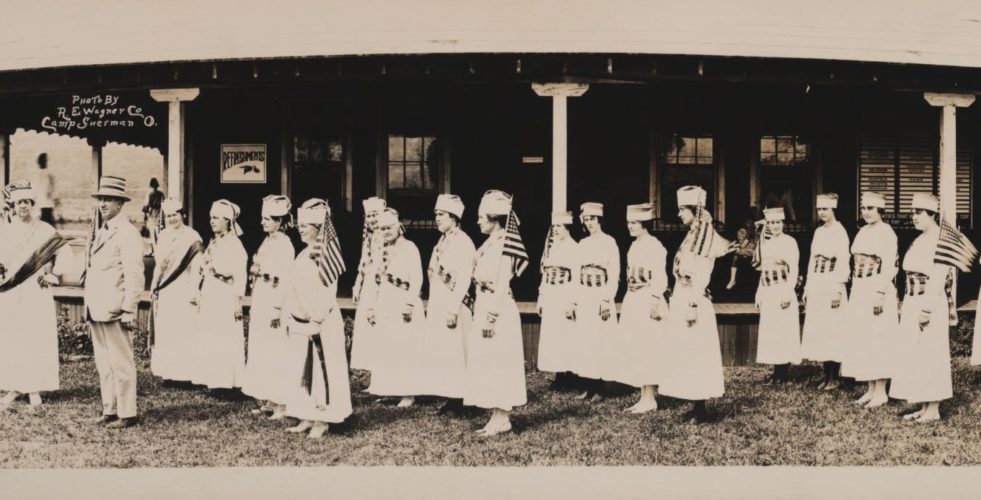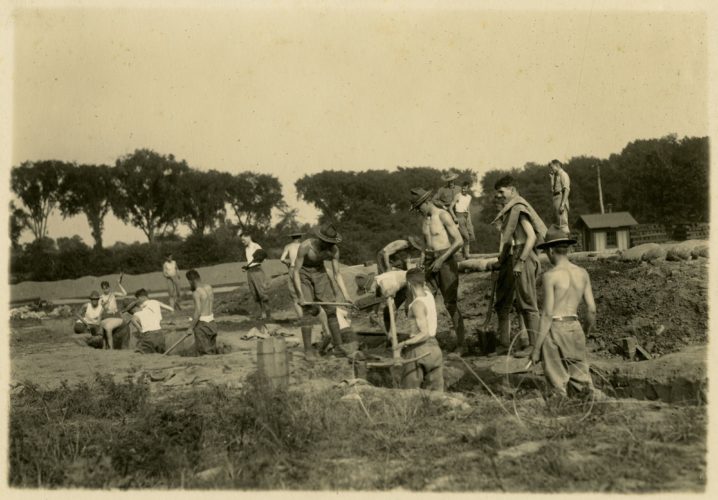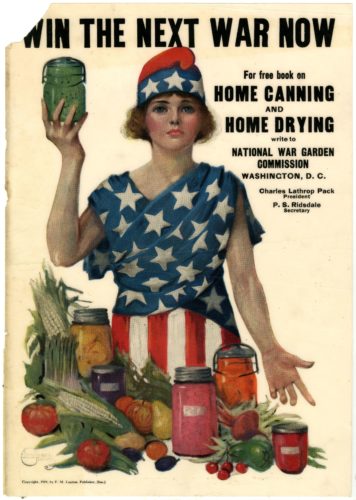Sweet Summer Time during the Great War


Perhaps last week you celebrated the summer solstice by soaking up the sun at the pool or sought shade at a picnic in the park. In a few days, Americans across the country will come together for parades, barbecues, and fireworks on what is for many one of summer’s highlights–the Fourth of July. However you choose to spend these brief, blissful, warm months, summer is officially here!
As we move into the heart of summer, staff at the Ohio History Connection continue to add new World War I collections from the archives at the Ohio History Connection, and those of other cultural heritage institutions across Ohio, to Ohio Memory for the Little Stories of the Great War: Ohioans in World War I project, funded by the National Endowment for the Humanities.
Although we often categorize summer as a time for relaxation and vacations, summer didn’t mean taking a break from contributing to the war effort during World War I. Throughout the summers of 1917 and 1918, Allied troops and Americans on the home front were hard at work fighting on the front lines and supporting the war.

After enlisting, American soldiers received general and specialized training at military camps throughout the United States before traveling overseas for more intensive training in preparation for combat on the front lines. At camps in the U.S., soldiers learned such skills as how to fire rifles and machine guns, use gas masks, and read maps. In the photograph seen above, men at a training camp in Princeton, New Jersey, learn how to dig trenches under the hot sun.
One of the nation’s sixteen large training camps was located right here in Ohio—Camp Sherman. Camp Sherman, also referred to as “Ohio’s Soldier Factory,” had over 2,000 buildings on its campus and could house 40,000 men at any one time. By the end of the war, more than 120,000 soldiers passed through Camp Sherman. Troops there did endure rigorous training, but organizations like the YMCA provided spaces for leisure activities, like reading, watching films, and playing baseball.

Soldiers fighting overseas observed the Fourth of July as well. Harlan W. Johnson from McConnelsville, Ohio, served as an aero-observer in the 168th Aero Squadron in France. In this letter to his brother, Harlan mentions that the French are hosting a large Fourth of July celebration in Tours, with many American flags displayed throughout the city.
On the home front, men, women, and children were just as diligent in doing their part to support the war by purchasing and selling war bonds, volunteering with organizations like the Red Cross and Knights of Columbus, and conserving food. One of the ways Americans could conserve food during the summer was to grow produce in war gardens. Families could use garden books and canning guides to get started in the early summer, and ensure that they would have a well-stocked cellar in the fall.
While Americans may celebrate a little differently today, the Fourth of July and summertime still bring families together through food, fun, and flag waving, and remind us of our part in the larger history of this country. Check back with us soon to see more little stories of the Great War!
Thanks to Kristen Newby, project coordinator at the Ohio History Connection, for this week’s post!



Leave a Reply
You must be logged in to post a comment.